Michigan is one of the most fascinating states in the United States, with its Upper and Lower Peninsulas and more than 11,000 lakes. However, it’s not just the state’s geography that is fascinating. There are some incredible animals, too! Although there’s no doubting the imposing presence of the massive bison, there are some pretty unique smaller reptiles, namely snakes. There are 18 species of snakes in the state, which can vary widely in size and color. So, let’s uncover the brown snakes in the state (and find out which one is dangerous)!
1. Massasauga Rattlesnake (Sistrurus catenatus)
We’ll kick off the list with the only venomous snake in the state — the massasauga rattlesnake. The eastern massasauga is the subspecies that occurs in Michigan, and these snakes mainly live in wetland habitats such as swamps, moist grasslands, and floodplains. They are widely distributed across the Lower Peninsula. There are more populations of them across Michigan than in any other state within their range. Massasaugas are 24 to 30 inches long and have gray to grayish-brown bodies with darker blotches. They have highly toxic venom but only a small venom yield. This means that they are not usually able to inject enough venom for their bites to be fatal for healthy adults. When threatened, they usually freeze and attempt to use their color to blend in with their surroundings.

©Ryan M. Bolton/Shutterstock.com
2. Eastern Fox Snake (Pantherophis vulpinus)
The first of two fox snakes in Michigan is the eastern fox snake which is a state-threatened species. Eastern fox snakes are typically three to six feet long and have golden brown bodies with large, dark brown spots. They typically live in open wetland habitats near large rivers and lakes, although they do sometimes inhabit open woodlands and fields. However, eastern fox snakes only occur in a few counties in the southeastern region of Michigan. Although they are not venomous, they are powerful snakes and kill a variety of birds and small mammals by constriction.
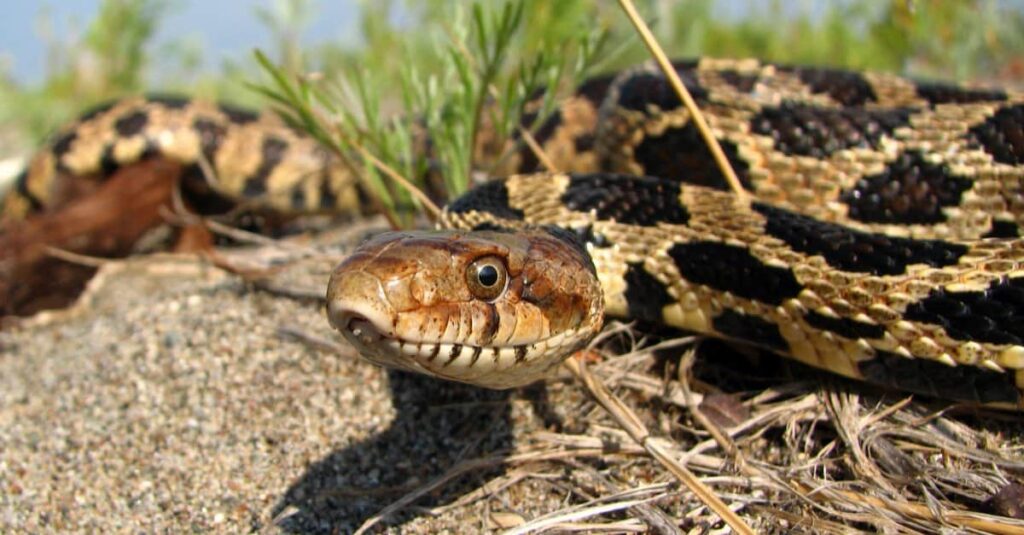
©Ryan M. Bolton/Shutterstock.com
3. Western Fox Snake (Pantherophis ramspotti)
Like the eastern fox snake, the western fox snake is a golden brown color with large black or dark brown spots. However, they are slightly smaller at three to five feet long. Western fox snakes live in forest edges and forests near large rivers. Again, they are powerful constrictors and prey on mammals and birds. When threatened, these snakes have a tendency to move their tail around in the leaf litter to create a noise that mimics a rattlesnake.
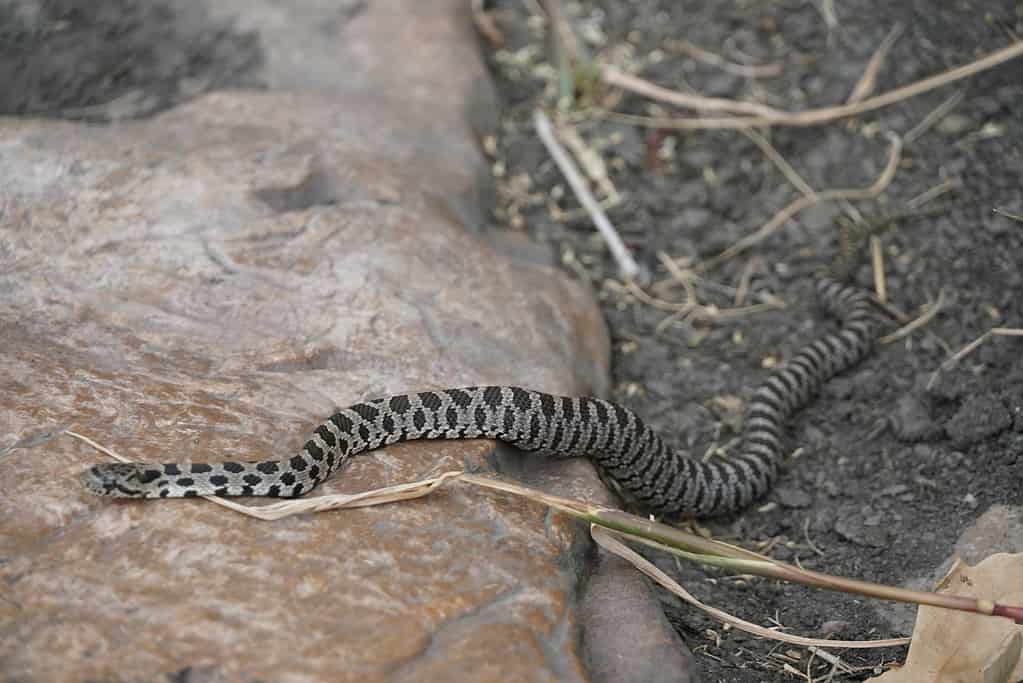
©Davis Harder, CC BY 4.0 <https://ift.tt/8sMVorw>, via Wikimedia Commons – License
4. Kirtland’s Snake (Clonophis kirtlandii)
The next snake we have is Kirtland’s snake which is an endangered brown snake in Michigan. Kirtland’s snakes prefer moist habitats such as wet meadows, marshes, and along the edge of floodplains. They are fossorial and typically burrow into the leaf litter or underneath rocks or logs, although they only occur in counties in the south and southwestern region of the state. Kirtland’s snakes are small snakes and reach approximately 12 to 18 inches long. They are greyish brown on their dorsal side, with small black spots along their sides and larger ones down the center of their back. However, their most distinctive feature is their bright red belly.
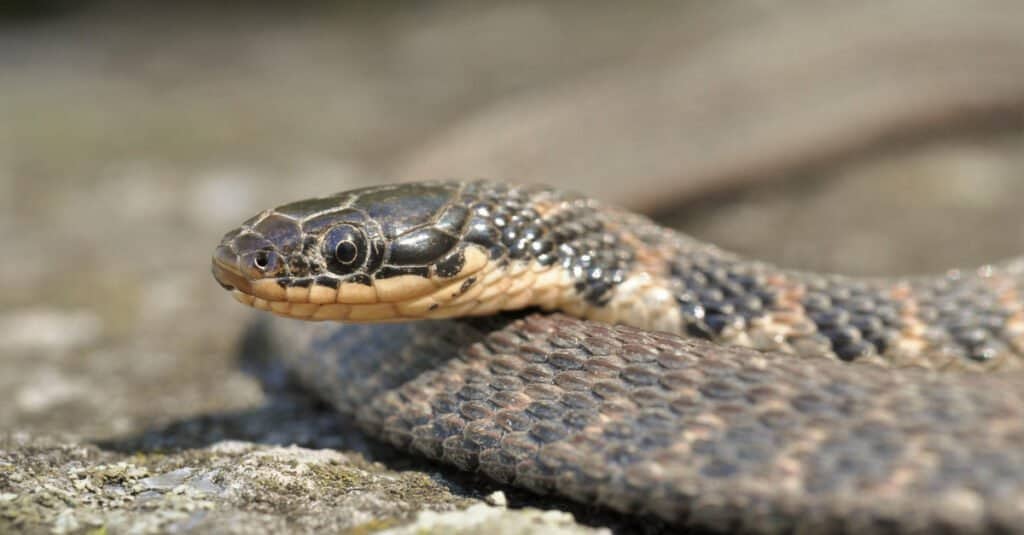
©Mike Wilhelm/Shutterstock.com
5. Northern Water Snake (Nerodia sipedon)
One of the largest brown snakes in Michigan is the northern water snake which reaches around five feet long. Northern water snakes are dark brown and have dark brown to black crossband markings. They live in virtually any freshwater habitat and are widespread across the Lower Peninsula and the eastern region of the Upper Peninsula. Northern water snakes prey on various fish and amphibians, all of which are swallowed alive. Despite not being venomous, bites from northern water snakes can be serious as they will bleed profusely. This is because their saliva has an anti-coagulant in it which stops blood from clotting.
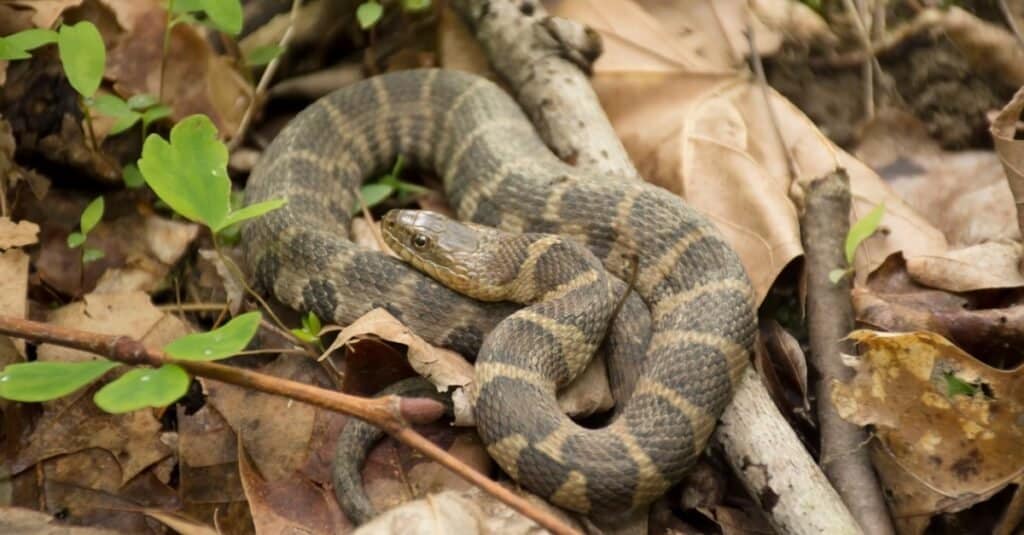
©iStock.com/IcemanJ
6. Queen Snake (Regina septemvittata)
Another aquatic snake is the queen snake which inhabits shallow, rocky streams and rivers in only Cass, Kent, Monroe, Muskegon, Tuscola, and Washtenaw counties. Queen snakes prey mainly on crayfish and are uniquely adapted to doing so. This is because they have a distinctly flattened head that allows them to reach underneath rocks in search of food easily. They also have thicker scales underneath their chin and on the top of their head to protect them against sharp rocks. Queen snakes are approximately 24 inches long and have slender brown bodies with yellowish bellies. They have three dark stripes along their back, although these are more easily seen when the snakes are young. They also have two lighter-colored stripes along their sides.

©Jason Patrick Ross/Shutterstock.com
7. Butler’s Garter Snake (Thamnophis butleri)
The next brown snake in Michigan is the Butler’s garter snake. It mainly lives in the eastern region of the Lower Peninsula. Butler’s garter snakes largely inhabit wetlands such as wet meadows and the edges of streams, ponds, and lakes. They prey mainly on earthworms but also eat frogs and salamanders. Butler’s garter snakes are not venomous, although they can occasionally bite. These snakes are 15 to 20 inches long and have brown to black bodies with three yellowish stripes along their body.
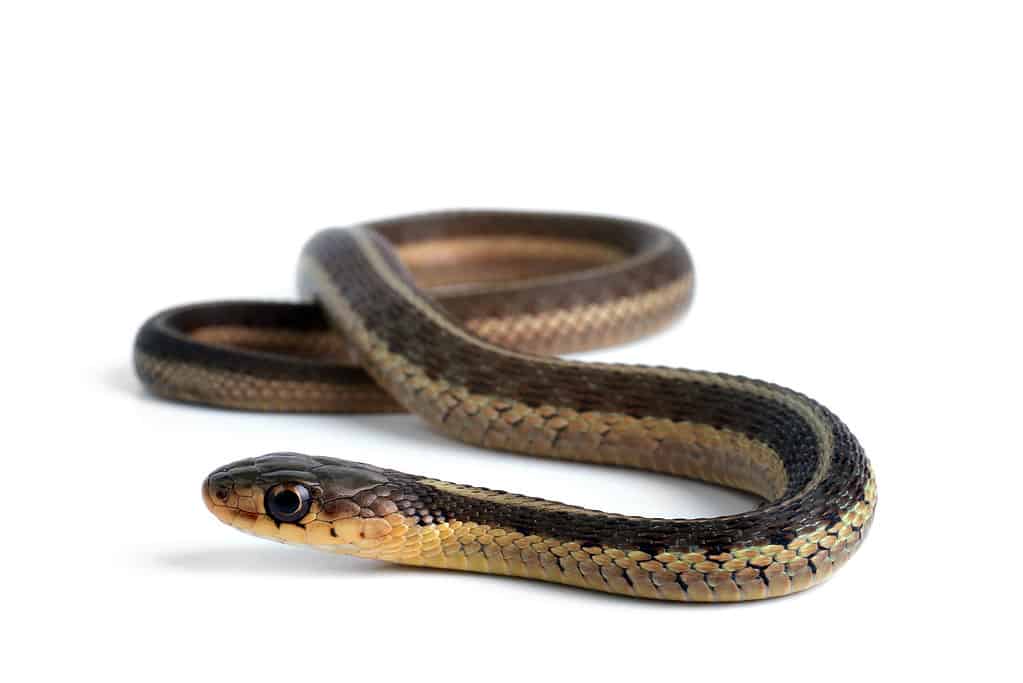
©Michiel de Wit/Shutterstock.com
8. Dekay’s Brown Snake (Storeria dekayi)
Finally, we move on to Dekay’s brown snake, another very small snake at only 13 inches long. They have slender brown bodies with lighter, tan-colored bellies. They also have black spots arranged in two rows on their backs. Dekay’s brown snakes live in various habitats — including woodlands, forests, wet meadows, and even residential areas. However, they are very secretive and prefer to spend their lives hidden away in the undergrowth. Dekay’s brown snakes have numerous predators because of their small size, but they prey only on worms and slugs. They are completely harmless and pose no threat to humans.

©Paul Reeves Photography/Shutterstock.com
The post These Are the 8 Brown Snakes Slithering Around Michigan appeared first on AZ Animals.
from Animal News, Facts, Rankings, and More! - AZ Animals https://ift.tt/pAVJk1T